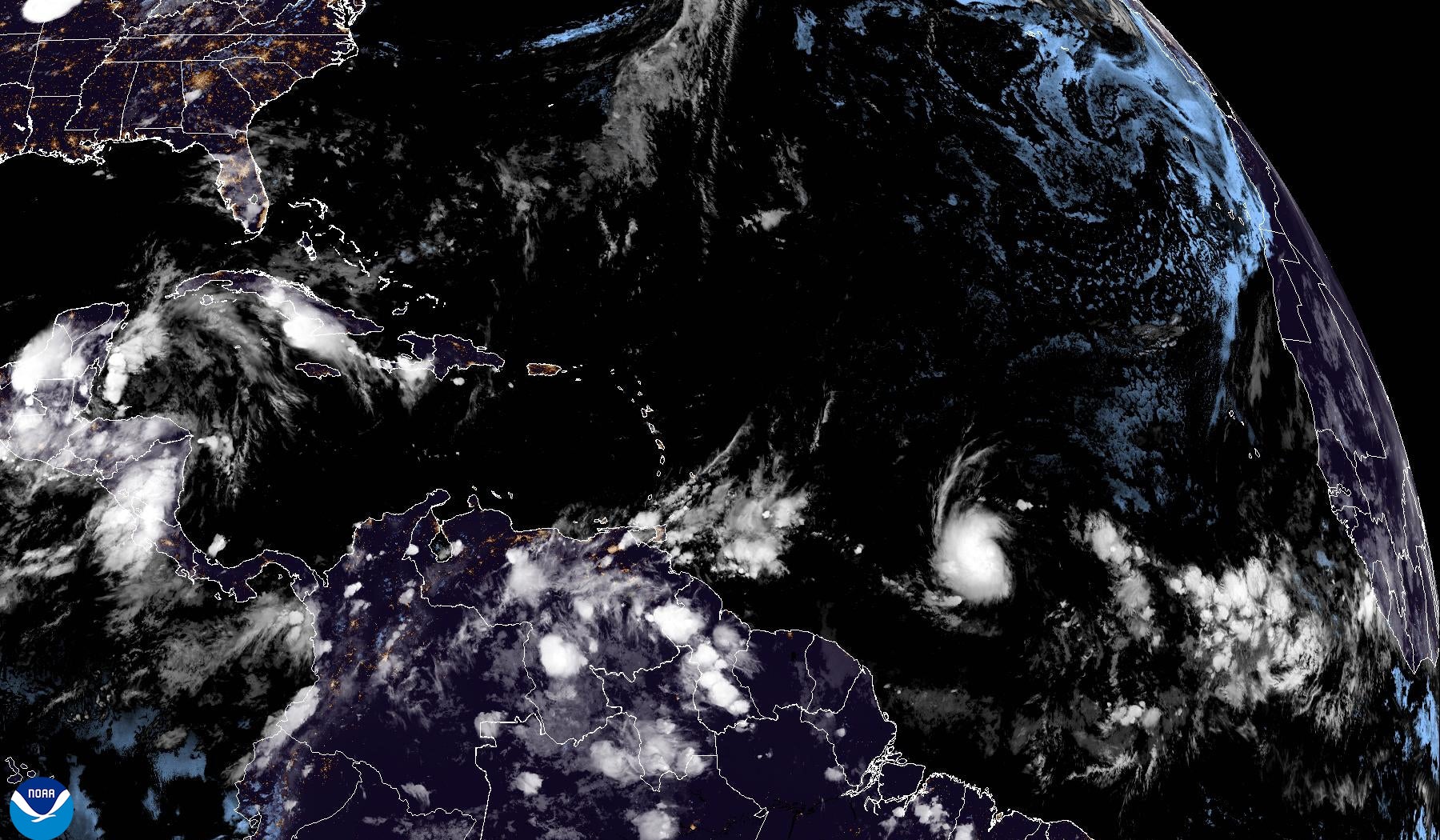Tropical Storm Beryl forms in the Atlantic Ocean, blowing toward the Caribbean Sea
Tropical Storm Beryl has formed in the Atlantic Ocean and is forecast to gain strength as it moves into the Caribbean Sea early next week

Your support helps us to tell the story
From reproductive rights to climate change to Big Tech, The Independent is on the ground when the story is developing. Whether it's investigating the financials of Elon Musk's pro-Trump PAC or producing our latest documentary, 'The A Word', which shines a light on the American women fighting for reproductive rights, we know how important it is to parse out the facts from the messaging.
At such a critical moment in US history, we need reporters on the ground. Your donation allows us to keep sending journalists to speak to both sides of the story.
The Independent is trusted by Americans across the entire political spectrum. And unlike many other quality news outlets, we choose not to lock Americans out of our reporting and analysis with paywalls. We believe quality journalism should be available to everyone, paid for by those who can afford it.
Your support makes all the difference.Tropical Storm Beryl formed Friday in the Atlantic Ocean and could strengthen into the year's first hurricane before it reaches the Caribbean Sea early next week.
Beryl is the second named storm in what is predicted to be a busy hurricane season, which runs from June 1 to Nov. 30 in the Atlantic. Earlier this month, Tropical Storm Alberto came ashore in northeast Mexico with heavy rains that resulted in four deaths.
Beryl was moving westward Friday, according to the National Hurricane Center in Miami. It had top sustained winds of 40 mph (64 kph). A tropical storm is defined by sustained winds between 39 mph and 73 mph (62 kph and 117 kph). Winds above that make it a hurricane.
The National Oceanic and Atmospheric Administration predicts the 2024 hurricane season is likely to be well above average, with between 17 and 25 named storms. The forecast calls for as many as 13 hurricanes and four major hurricanes.
An average Atlantic hurricane season produces 14 named storms, seven of them hurricanes and three major hurricanes.
A no-name storm earlier this June dumped more than 20 inches (50 centimeters) of rain on parts of South Florida, stranding numerous motorists on flooded streets and pushing water into some homes in low-lying areas.